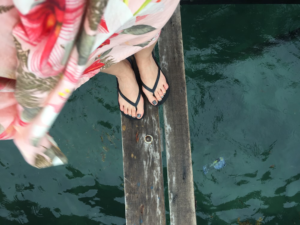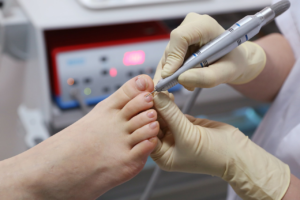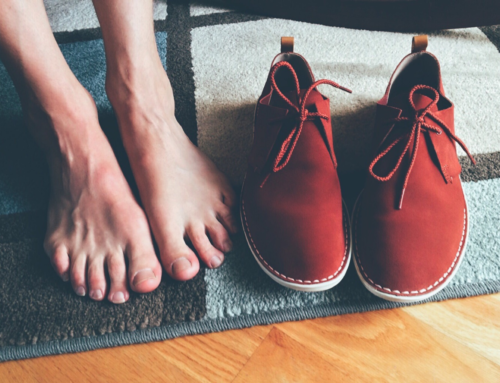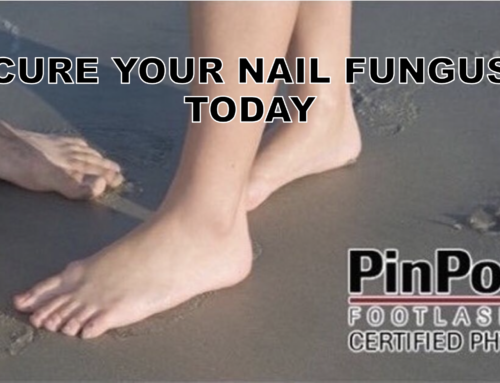Toenail fungus infection in the summertime can be a hassle. The summertime is a fun time when you and your family vacation. It is important to take care of your nails during this time. It can be easy to get a toenail fungus infection during the summertime. As a result, our nail doctors can consult you if you do get infected. It is important to see a nail doctor. Furthermore, they will help give the best treatment option to get rid of toenail fungus.
Summer is all about sandals, beach days, and bare feet, but if you’re dealing with toenail fungus, it can quickly turn into the season of embarrassment and discomfort.
At Laser Nail Therapy, we often hear from patients who say their toenail fungus seems to worsen during the warmer months. And they’re not imagining it. Summer conditions are ideal for fungi to thrive and spread.
Let’s break down why toenail fungus can worsen in the summer and what you can do about it.

Heat and Moisture: A Fungus’s Favorite Conditions
Fungal infections love warm, moist environments, and that’s exactly what summer provides. Higher temperatures lead to sweatier feet, especially when you’re wearing closed-toe shoes or walking for long periods.
If sweat gets trapped in your shoes or socks and your feet stay damp for too long, you’re giving fungus the perfect place to grow.
Increased Exposure in Public Spaces
Summer also means more time in:
-
Public pools
-
Locker rooms
-
Water parks
-
Communal showers
-
Hotel bathrooms
Public Places in the Summer
The summertime is when people like to be out and about it with their family and friends. Walking barefoot in public pools, locker rooms, and gyms can infect you with a toenail fungus. It is important to always wear shoes. Whether it is slippers, closed-toed shoes, or open-toed shoes.
Once you become infected, you will be more prone to reinfection. Always be aware of the public places you go.
These are all high-risk areas where fungus can easily spread. Walking barefoot in any of these places puts you at risk of picking up or worsening a toenail fungal infection.
Wearing the Wrong Footwear
Flip-flops and sandals are great for ventilation, but they don’t protect your feet from the germs on public floors. On the flip side, wearing tight, sweaty sneakers for long walks or workouts without moisture-wicking socks can trap sweat and create a breeding ground for fungus.
Both types of footwear come with their risks, and without proper foot hygiene, toenail fungus can flourish either way.

Toenail Fungus in the Summer
Why do people get infected in the summertime? There are a few ways people get infected. As a result, it is important to be careful.
- Avoid being barefoot in public places
- Always wear shoes at public pools, gyms, and locker rooms
- Don’t share nail clippers
- Always disinfect your nail clippers after each use
- Don’t use the socks when switching shoes
- Try not to wear the same shoes in warm weather. As a result, a warm environment in your shoes is perfect for a toenail fungus to develop
Increased Nail Trauma from Activity
Summer often brings more physical activity: hiking, running, sports, and swimming. These increase the chances of minor nail injuries, which make it easier for fungus to enter the nail bed. Even a tiny crack or lift in the nail plate can become an open door for infection.
Other Places with Toenail Fungus
Nail Salons are other places in which you can get infected. You must be aware of how sanitary a nail salon is. Make sure their nail tools are disinfected and sanitized.
Always make sure you are comfortable with the nail salon you go to. As long as it’s clean and sanitary, there should be no issue or concern about getting a toenail fungus infection.
What You Can Do to Protect Your Nails This Summer
-
Dry your feet thoroughly after swimming or sweating
-
Wear breathable socks and shoes (switch pairs often)
-
Use an antifungal spray or powder in your shoes
-
Avoid walking barefoot in public places
-
Disinfect your nail tools (or bring your own to salons)
-
Treat any early signs of fungus before they spread
Toenail Fungus Prevention
Prevention of nail fungus is important. One way of getting a nail fungus is skin-to-skin contact with people who already have it or other fungal infections on their skin, such as Athlete’s foot. Another way of getting fungi in your nails is through objects. You can get nail fungus by walking barefoot in a warm and moist area, such as a public pool, or by sharing an infected nail clipper or shoes.
In addition to those conditions above, simply age can be a factor too – older adults are more prone to getting fungal nail infections. If you have these conditions above, be extra careful with the fungal nail infection. If you notice any changes in your nails, ask your doctor immediately.
Toenail Fungus Preventative Tips #1
The first tip we have here is to try and keep your feet clean and dry. The reason why you want to keep your feet clean and especially dry is that the fungus thrives in warm, moist environments. This is especially true for people who work long hours standing on their feet. Make sure to always wash your feet daily with soap and water. Clean your feet thoroughly, paying special attention to the areas between your toes. Once your feet are nice and clean, dry feet well; do not leave your feet damp, especially if you are putting on shoes right after cleaning them.
Another important tip is to change your socks frequently. The reason you want to change your socks frequently is that wearing them for an extended period of time can create a moist environment that encourages fungus to grow. Changing your socks daily will help prevent toenail fungus or more especially if your feet sweat heavily throughout the day. By following this tip, you can reduce your risk of developing toenail fungus
Toenail Fungus Preventative Tips #2
Another tip that some people might not be aware of is wearing shoes that fit well. This is important to prevent toenail fungus, as tight-fitting shoes can create a warm, moist environment that encourages a toenail fungus to grow. As you get older, your shoe size can change. You should measure your feet before buying a new pair of shoes. This will ensure you buy the right shoe size. When buying shoes, it is recommended to buy them at the end of the day. this is because your feet can swell throughout the day so it’s best to try on new shoes when your feet are at their largest.
Another important factor is buying shoes with a wide-toe box. Shoes with a narrow toe box can squeeze your toes together and increase the risk of developing a toenail fungus. Also, when buying shoes, it is best to buy shoes with breathable material. Buying shoes with a breathable material like mesh or leather will help keep your feet dry, thus reducing the risk of a toenail fungus infection.
Lastly, you should avoid wearing high heels and shoes with pointed toes. Although they can be cute and very stylish, wearing them on a daily basis can cause toenail fungus to develop. The reason why you can develop a toenail fungus with high heels and pointed-toed shoes is that they put pressure on your toes. This pressure can create a damp, moist environment for a toenail fungus to grow. It is important to take care of your feet when choosing new shoes.
Prevention Tips #3
When it comes to avoiding toenail fungus, it is important not to share any personal items. Toenail fungus is contagious and can spread from person to person. Some personal items you should not be sharing are your shoes and socks. Toenail fungus thrives in warm, moist environments, like in shoes and socks. The toenail fungus can spread through contact with infected socks and shoes. Another personal item you should not be sharing is your towel. The toenail fungus can spread through contact with the infected skin and toenails. If someone who has a toenail fungus infection is going to use your towel, make sure to wash it before using it again to ensure you will not get infected.
Other important personal items not to share are your sandals and flip-flops. These are so easily interchangeable with people you may live with. Make sure no one else is using your sandals or flip-flops, especially when you are in public spaces. Lastly, make sure not to share any of your nail care items, like nail clippers and nail filers, with anyone. When someone who has a toenail fungus infection uses your nail care items, they can directly infect your nails. Especially when they are not properly cleaned and sanitized after each use. It is best not to let anyone use your nail clippers, filers, and all other nail care items.
Preventative Tips #4
Another important preventative tip is to always wear shoes in public spaces. Walking barefoot in public spaces can greatly increase your chance of getting a toenail fungus. A common place people do not think of wearing shoes is public pools. People will walk around the pool area barefoot, and you can never know if someone who has a toenail fungus infection has also been walking barefoot. Always wear some flip-flops or sandals at the public pools.
Another common place to get a toenail fungus infection is in locker rooms. People tend to change and shower in locker rooms. People who do not wear any shoes in the locker room are at a high risk of getting a toenail fungus infection. This is especially true in gym locker rooms, as many people tend to be sweaty and not the cleanest. Always wear shoes if you do not want to get infected with a toenail fungus.
Even in your own homes, you can be at risk. If someone in your household has a toenail fungus infection, it is important to always wear shoes if they tend to walk barefoot. Toenail fungus can be found in our everyday environment, so the best way to avoid it is to always wear shoes. Avoid walking barefoot to ensure that you will not get infected with a toenail fungus. It is especially important during the summertime, as it is more likely to get infected when it is hot, as fungus thrives in warm, moist environments.
Toenail Fungus Preventative Tips #5
The last of the toenail fungus preventative tips we recommend is keeping good foot hygiene. In addition to keeping your feet clean and dry, it is important to maintain your nails. This includes trimming your nails regularly. Avoid picking or biting your nails. Also, you should not wear nail polish or the same artificial nails for an extended period of time as it can lead to a toenail fungus infection. These habits can help prevent fungal growth and keep your nails healthy.
If you tend to go to nail salons, make sure they are sanitary and clean. Many people have gotten a toenail fungus infection from nail salons. Make sure that all nail equipment is disinfected and clean. It is recommended to bring your own personal nail care items to ensure you won’t get infected with toenail fungus. Make sure the nail salon is clean and sanitized each time you go.
Laser Treatment for a Toenail Fungus
Toenail fungus treatments in San Francisco can vary. If you have caught nail fungus, it can be easily treated using the FDA-approved PinPointe laser, which typically only takes one treatment. Other treatments, like topical solutions and oral medication, are not as effective. Topical solutions have a very low cure rate. This is because the solution does not penetrate all the way through the nail bed. This is because it can lead to liver toxicity. You would need to have consistent blood tests throughout the course of taking the medication.
Our nail doctor in San Francisco, CA, recommends this treatment for toenail fungus. The PinPointe Laser treatment has the highest cure rate in the market. It has no side effects and no recovery period. As a result, you can go about your daily activities right after the treatment. Also, there’s no pain.
How does laser treatment for toenail fungus work?
You might be wondering how laser treatment works. Our board-certified podiatrists will first debride your nails if they’re thick. They will trim and file down your nail to ensure the laser penetrates all the way through your nail bed. Afterward, they will perform the laser treatment. The laser uses a concentrated heat source that targets the fungus only. The laser is applied over the nails in a grid-like pattern to ensure the entire nail is covered. This will kill all the fungus that is present on your nail and your nail bed. It also doesn’t damage the surrounding skin. The laser beams are emitted in pulses to ensure the treatment won’t be painful. Most people feel a warming sensation when the treatment is performed.
Once the treatment is finished, our foot doctors will explain any necessary post-treatment care. Although all the fungi have been killed, there is always a chance for reinfection in the environment around you. It is important to follow all necessary post-treatment care to ensure the toenail fungus infection will not return. In some cases, some of our doctors will recommend more than one treatment. If that is your case, the follow-up treatments are given at a reduced rate.
Laser Nail Therapy: A Treatment That Works, Even in Summer
If your toenail fungus has flared up or worsened this season, you’re not alone. And you don’t have to be stuck with it. At Laser Nail Therapy, we offer treatment with the PinPointe™ FootLaser®, a painless, non-invasive, and highly effective solution that targets the root of the infection under the nail.
Even better? The risk of reinfection is low when combined with simple preventive steps, meaning you can enjoy your summer confidently and fungus-free.

Call us today at 1-800-672-0625 to book your free consultation.
This could be the summer your feet finally feel healthy again.




